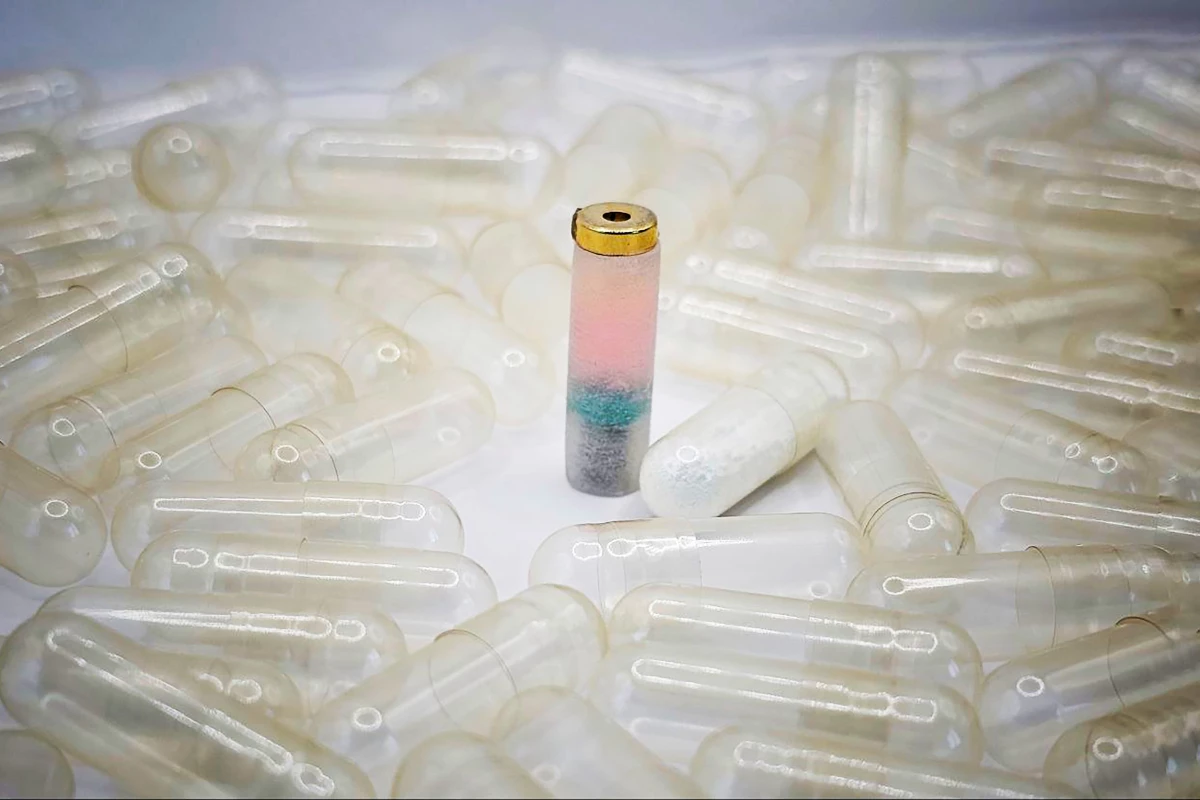A groundbreaking device designed to treat ulcers through a swallowable mechanism is currently under development by researchers in Switzerland. The “pill-sized” MEDS (Magnetic Endoluminal Deposition System) could potentially offer a non-surgical solution for patients suffering from perforated ulcers. This innovative technology aims to effectively seal openings in the digestive tract without the need for invasive procedures.
Developed by a team led by researchers Vivek Subramanian and Sanjay Manoharan at the École Polytechnique Fédérale de Lausanne (EPFL), the MEDS device resembles a small pen that contains a bio-ink composed of sodium alginate gel derived from seaweed and live human gastric fibroblasts. These fibroblasts play a crucial role in forming the stomach’s connective tissue, which is essential for healing.
The MEDS device is equipped with a spring-loaded plunger that is initially held back by a polylactic acid (PLA) polymer stopper. At the dispensing end, a nozzle features a gold-coated neodymium-iron-boron ring magnet. Once the patient swallows the device, a magnet on a robotic arm guides it through the digestive tract to the location of the ulcer, using medical imaging to navigate accurately.
Once the nozzle reaches the ulcer site, a near-infrared light (NIR) source is placed against the skin, emitting light that penetrates the tissue. The heat generated by this light causes the PLA stopper to melt, releasing the plunger and allowing the bio-ink to be dispensed directly into the ulcer. This not only effectively plugs the perforation but also promotes healing, as the fibroblasts within the bio-ink grow and multiply.
The innovative technology has shown promising results in laboratory settings. It has been successfully employed to treat artificial ulcers on simulated gastric tissue and has been used in animal studies where bio-ink was deposited in the digestive tracts of rabbits without existing ulcers. In these cases, the MEDS devices were retrieved through the animals’ mouths after the treatment rather than being excreted.
In controlled experiments, the cell-laden bio-ink maintained its structural integrity for over 16 days, indicating its potential function as a “micro-bioreactor.” This capability suggests that the device could effectively release growth factors and attract new cells essential for wound healing. Sanjay Manoharan, a PhD student in Subramanian’s lab, commented on the findings, highlighting the significant implications for future ulcer treatments.
A research paper detailing this groundbreaking work was recently published in the journal Advanced Science, showcasing the potential of the MEDS device to transform the way ulcers are treated. As this technology advances, it could pave the way for less invasive options and improved patient outcomes in the management of digestive tract ulcers. The development team continues to refine the device, aiming for clinical applications in the near future.
